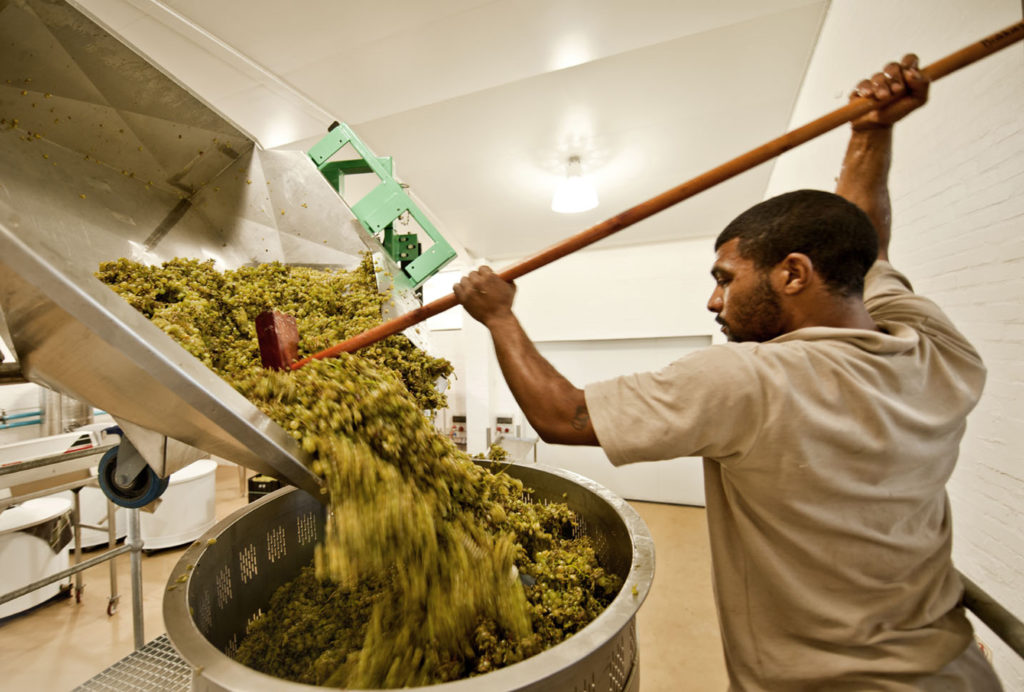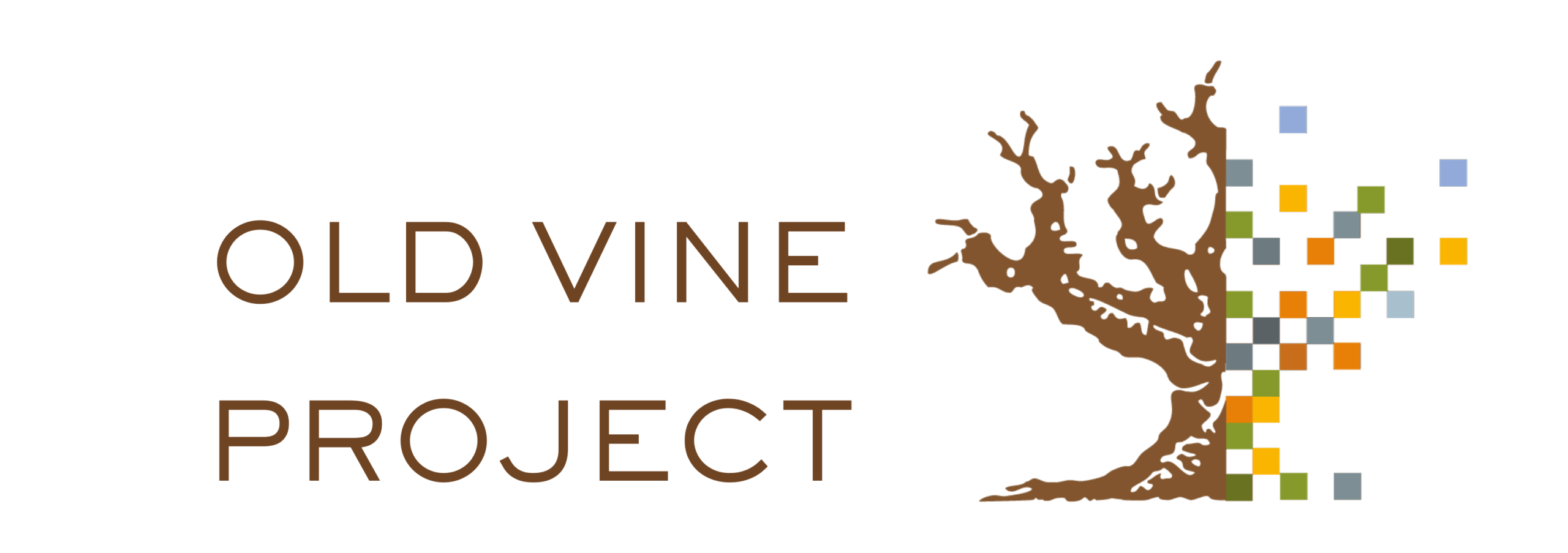Our philosophy in the vineyards tends towards the natural rather than the scientific.
We aim to create wines that reflect the beautiful place from which they come and the different blocks from which the grapes are picked. For this reason, we try to use less chemical fertilisers, fewer pesticides and to irrigate as little as possible. We hope to achieve natural, well-balanced vineyards and ultimately yield better quality wines. Only grapes grown on Keermont Vineyards are used in the production of our wine.
Keermont Vineyards is blessed with some very special and unique vineyard sites. The farm is situated high up in the picturesque Blaauwklippen Valley, otherwise known as Paradyskloof (Paradise Valley). The Blaauwklippen River, which bisects the farm, is also the boundary between the Helderberg and the Stellenbosch Mountain Range. This means that some of the vineyards are on the warmer north-facing Helderberg slopes and others on the cooler west-facing Stellenbosch range. Due to the steepness of the terrain, the altitude climbs 200m within the 1.7km length of the farm and the vineyards are planted between 250m and 400m above sea level. The vines planted over these different terrains produce wines with good complexity and a variety of flavours. In addition, just over the Helderberg mountains, False Bay and the Atlantic Ocean are just 12.5km from the farm, which also contributes to the microclimate on the farm.


Guardian Peak towers over the farm on its eastern side. The highest point of the Stellenbosch mountain range is just over 1000m. The sun rises from behind this peak year-round, resulting in a much later sunrise than in the rest of the area. This effect, combined with the altitude at the top of the valley, results in very cool night-time and morning temperatures which are excellent for the slow ripening and good phenolic development of our grapes. The cool south-east breeze that blows off the Atlantic Ocean during summer also helps to keep afternoon temperatures fairly moderate.
Our soils are generally a deep, rich, red loam. There is a colluvial layer of quartzitic sandstone boulders in a matrix of dominantly sandstone-derived loamy sand which was formed by the weathering of the rocky upper parts of the surrounding mountains. These soils are rich in iron, minerals and organic matter and have a good water-holding capacity due to their clay content.
The Blaauwklippen River runs through the middle of the farm. It is fed by five streams which flow through the farm throughout the year. These streams have resulted in the formation of darker stony soils which give us areas of medium textured young alluvium. The mountainous terrain and differing soil types have given us pockets of excellent and varied terroir. These pockets are separated by tracts of pristine mountain Fynbos and Renosterveld (endemic to the Western Cape of South Africa). We believe all the natural vegetation encourages the accumulation of natural predators and deterrents to those organisms that may attack vineyards. Each pocket of varied terroir has been carefully studied and the best grape variety and rootstock combination has been chosen to be planted there. Blocks of vineyards are further divided into separate parcels of differing clones of that grape variety. This enables us to manage each parcel according to its own planting density, training and irrigation needs.
We work hard to protect this incredible environment. We are members of the Integrated Production of Wine (IPW) scheme which ensures that we farm and produce wine in a sustainable manner. We have over 100 ha dedicated to conservation. Read more about this organisation at: www.ipw.co.za
Grape varieties planted can be seen in the list below along with the size of their vineyard area.
| Variety RED | Size of Vineyard (Ha) |
|---|---|
| Shiraz | 6.0 |
| Cabernet Sauvignon | 5.4 |
| Merlot | 3.0 |
| Cabernet Franc | 1.8 |
| Mourvèdre | 0.8 |
| Petit Verdot | 0.7 |
| Malbec | 0.4 |
| Total RED | 18.1 |
| Variety WHITE | Size of Vineyard (Ha) |
|---|---|
| Chenin Blanc | 4.6 |
| Sauvignon Blanc | 2.8 |
| Chardonnay | 1.3 |
| Roussanne | 0.7 |
| Viognier | 0.5 |
| Marsanne | 0.3 |
| Total WHITE | 10.2 |
We use a variety of planting densities ranging from 2600 to 5700 vines per hectare, according to the variety’s specific terroir requirements. Most vineyards are trained on a triple lengthened Perold system which consists of a split cordon at 700mm above the ground and three sets of movable foliage wires to a height of 1.7m. We have some smaller areas with other types, including bush vine and ‘Hermitage’ (or vine by pole, also known as ‘stokbypaal’ in Afrikaans) systems.
We aim to achieve more natural, well balanced vineyards and ultimately better quality wines.


In the winery we aim to guide our wines through fermentation and maturation as gently and naturally as possible. We believe that through this gentle process, we can capture the true essence of the fruit that we put so much effort into growing. For this reason we allow a natural and spontaneous fermentation to occur, we mature the wines in seasoned oak casks, we move the wine using gravitational flow rather than pumps and we bottle the wine with little filtration (our white wines) and with no filtration (our red wines).
Once the staff have finished picking (and have had a well-earned break) they move indoors to the winery. Here, the bunches of grapes are inspected before being destemmed. Tiny pieces of stem that make it through the destemmer are then removed from the grapes before they are crushed. The crushed grapes drop into a tub which, once full, is transported by a forklift to a tank for skin contact.
From this point onwards, the process varies for white and red grapes.
Red grapes spend the next two to three weeks in a fermentation tank. For this process we have both concrete and stainless steel tanks. All tanks are open topped, and during the fermentation, the grape skins are gently mixed with the juice using a wooden plunger, also known as punch-downs. This happens once or twice a day. Fermentation is carried out by the natural yeasts which live on the skins of the grapes. Once the juice has fermented dry, the wine is left in contact with the skins for further colour and tannin extraction for a few days. The wine is then drained from the skins and the skins are loaded into a basket press and gently pressed to extract the last of the wine. Red wines then go straight into the barrel. We use mostly second and third-fill French oak barrels and will store the wine in these for up to two years.
White wines only spend a couple of hours on their skins. The juice is separated from the skins before fermentation starts and, following overnight settling, goes straight into the barrel. The wine ferments and is left to mature on its lees for ten to twelve months. Wines are only fined if necessary using natural fining products. They are removed from the barrels and allowed to settle in the tank before being bottled and corked by hand with little or no filtration. All of the actions above are carried out making use of gravitational flow rather than pumping the wine; in fact, we don’t even own a pump! Our wines are matured in the bottle for six months to a year before releasing them. This ensures the wine settles adequately after bottling. Wines are labelled and packaged by hand. Every bottle and box is checked before it leaves the cellar.
Keermont wines are suitable for vegans.


